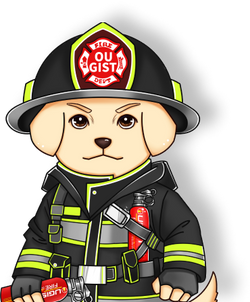Fire safety is a critical aspect of any environment, and proper fire extinguisher maintenance is essential to ensure the effectiveness of these life-saving tools. The National Fire Protection Association (NFPA) sets comprehensive guidelines for fire extinguisher maintenance to ensure they are ready to respond to emergencies. In this blog post, we'll delve into the NFPA's fire extinguisher maintenance standards and their significance in maintaining a safe environment.
Understanding NFPA Standards:
The NFPA is a globally recognized authority on fire safety, developing codes and standards that establish best practices for fire prevention, suppression, and protection. The NFPA 10 standard specifically outlines guidelines for the installation, inspection, maintenance, and testing of portable fire extinguishers.
Key Components of NFPA Fire Extinguisher Maintenance:
-
Inspection Frequency:
- According to NFPA 10, fire extinguishers should be visually inspected at least once a month.
- A more detailed inspection by a trained individual or certified fire safety professional should be conducted annually.
-
Monthly Inspections:
- During monthly inspections, visually check the extinguisher's location, accessibility, and overall condition.
- Ensure the pressure gauge indicates a full charge, and the tamper seal and safety pin are intact.
-
Annual Maintenance:
- Annual maintenance involves a thorough examination by a certified professional.
- This inspection includes checking for physical damage, proper pressure, and the functionality of components such as hoses, nozzles, and valves.
-
Hydrostatic Testing:
- Fire extinguishers should undergo hydrostatic testing, which involves pressure testing the cylinder, at regular intervals.
- The testing frequency varies based on the type of extinguisher and ranges from 5 to 12 years.
-
Recharging:
- After any use, a fire extinguisher should be recharged by a certified professional.
- Fire extinguishers with low pressure readings on the gauge also need to be recharged.
Professional Involvement:
NFPA 10 emphasizes the importance of having fire extinguishers inspected, maintained, and serviced by qualified individuals or certified fire safety professionals. These experts have the knowledge and skills to identify potential issues, perform required maintenance, and ensure compliance with NFPA standards.

Recording and Documentation:
Maintaining records of fire extinguisher inspections, maintenance, and testing is a crucial component of NFPA compliance. Proper documentation provides a history of servicing and helps in demonstrating adherence to safety standards.
Benefits of NFPA-Compliant Maintenance:
-
Reliability: Regular maintenance in line with NFPA standards ensures that fire extinguishers are functional and reliable when needed.
-
Compliance: Following NFPA guidelines helps organizations and individuals stay compliant with safety regulations.
-
Enhanced Safety: NFPA-compliant fire extinguisher maintenance contributes to a safer environment by mitigating fire risks effectively.



